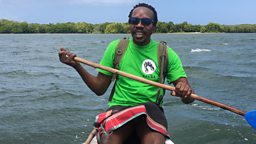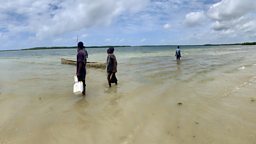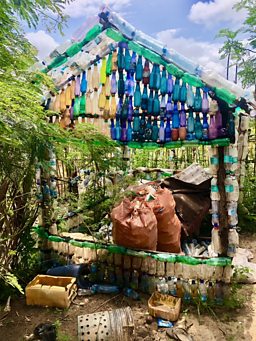Protecting a Kenyan paradise

Mida Creek, on Kenya's coastline about two hours north of Mombasa, rightly has a reputation for being a birdwatcher's paradise.
Surrounded by mangrove forests, its beaches teem with crabs and other crustaceans, which in turn bring in migratory birds from around the world. Juvenile sea turtles hide in the safety of the roots.

But there's trouble in paradise. Fish stocks have plummeted in the last thirty years, and many people who once would have fed their families through fishing and farming face a difficult choice: starve, or leave to find work in Malindi, Mombasa or even in the US or Dubai.
Hassan, a local guide who was born in the creek and whose father is a fisherman, says pollution and the proliferation of hotels and boat yards – with their accompanying bright lights and smell of oil - seem to deter fish from coming to the creek as they once would.
"My father used to tell me in one night when they went out fishing they used to come back with 70 or 80 kilos of fish, but at the moment they're coming back with one kilo or half a kilo".
This in turn has led many local people to start using less sustainable fishing methods: "Due to lack of fish, people start to use other fishing methods [...] poisoning even the breeding sites of the fish".

Most tourists who come to the creek will come just for the day, brought by external tour companies. But over the last few years some local people, like Hassan, have been trying to change that, so that the benefits of tourism can also be felt by those living here. The first project was the building of a boardwalk to allow tourists to walk across the mangroves and get closer to the birds and wildlife. Other projects that followed were eco camps – allowing tourists to stay in huts built by the local community and eat meals prepared by them and using local produce. Tours are offered by local people like Hassan.
The proceeds from the boardwalk is put towards the school fees of local children. One beneficiary is Eunice, who now volunteers with the Bidii Na Kazi women's group (Bidii Na Kazi means ‘effort and work’). Set up just over a decade ago by award-winning conservationist Arafa Salim, the small group of mostly illiterate women are replanting the mangroves which have been cut back over the years. They also run a small kitchen and restaurant which caters to visiting groups of conservationists, ornithologists and tourists. It’s all small scale – but means a regular income for women who might otherwise not have any.

But it’s not been easy: Covid meant the group lost tourists and customers – and even more importantly, Arafa herself died of the virus. But they’ve picked themselves up – and Eunice is hopeful for the future: “Maybe I’ll want to do tourism someday because now we are reducing the bad fishing method and we are also reducing the deforestation. So I think the future will be good… in a few years to come Mida Creek will be a very different area.”
Hassan agrees: “It makes me so proud. Everywhere I go I tell people I’m from Mida Creek. I say ‘google it’ and they say ‘it’s a nice place’. So I’m proud of it.”

-
![]()
Listen to the latest Africa Daily
Alan Kasujja takes a deep dive into the news shaping the continent

